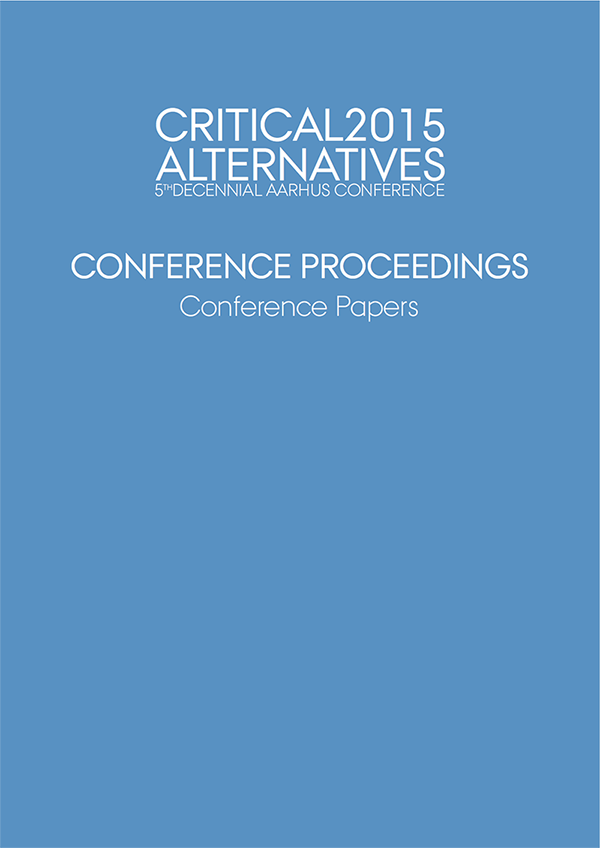Charting the Next Decade for Value Sensitive Design
DOI:
https://doi.org/10.7146/aahcc.v1i1.21619Keywords:
Value Sensitive Design, Human Computer Interaction, Technology and Human Values, Applied EthicsAbstract
In the 2010’s it is widely recognized by computer and information scientists, social scientists, designers, and philosophers of technology that the design of information systems is not value neutral [5-8,11]. Rather, such systems are value laden in part because societal values are major factors in shaping systems, and at the same time the design of the technology reinforces, restructures or uproots societal value structures. Of the many theories and methods to design for this phenomenon one continues to gain traction for its systematic and overarching consideration of values in the design process: Value Sensitive Design (VSD) [5-7]. The aim of this multidisciplinary workshop is to bring together scholars and practitioners interested in ways values can be made to bear upon design and to help continue to build a community by sharing experiences, insights, and criticism.
References
Borning, A., and Muller, M. 2012. Next steps for value sensitive design. In Proceedings of the ACM SIGCHI Conference on Human Factors in Computing Systems (CHI ’12), 1125-1134.
boyd, d. and Crawford, K. 2011. Six provocations for big data. A decade in Internet time: Symposium on the Dynamics of the Internet and Society. Available at SSRN: http://dx.doi.org/10.2139/ssrn.1926431
Davis, J., and Nathan, L.P . 2014. V alue Sensitive Design: Applications, adaptations, and critiques. In Handbook of Ethics, Values, and Technological Design 2014, Springer, pp 1-26.
Detweiler, C.A., Dechesne, F., Hindriks, K. V., and Jonker, C. M. 2012. Ambient intelligence implies responsibility. In Ambient Intelligence and Smart Environments, Ebook. Volume 12: Agents and Ambient Intelligence, 33 – 61.
Friedman, B., Kahn, P. H., Borning, A., and Huldtgren, A. 2013. Value Sensitive Design and information systems. Early engagement and new technologies: In Opening up the Laboratory. Doorn, N., Schuurbiers, D., van de Poel, I., Gorman, M.E. (Eds.). Springer Netherlands, 55-95. (Reprinted from Friedman, B., Kahn, P. H., Jr., and Borning, A. (2006). Value Sensitive Design and Information Systems. In P. Zhang and D. Galletta (eds.), Human-computer interaction in management information systems: Foundations (pp. 348-372). Armonk, NY: M. E.Sharpe.).
Friedman, B. and Nathan, L.P. 2010. Multi-lifespan information system design: a research initiative for the HCI community. In Proceedings of the SIGCHI Conference on Human Factors in Computing Systems. ACM, 2243-2246.
Friedman, B.. 1996. V alue-sensitive design. Interactions 3(6), 16-23.
Hoven van den, J., V an de Poel, I., and V ermaas, P . E. Handbook of ethics, values and technological design. Available at Springer Link: http://link.springer.com/ referencework/10.1007%2F978-94-007-6994-6.
Hoven van den, J. 2012. Brussels. Available at:
http://ec.europa.eu/research/science-society/document _library/pdf_06/options-for-strengthening_en.pdf.
Hoven van den, J., Helbing, D., Pedreschi, D., Domingo-Ferrer, J., Gianotti, F., and Christen, M. (2012). FuturICT-The road towards ethical ICT. arXiv preprint arXiv:1210.8181.
Mander-Huits, N., and Zimmer, M.. 2009. Values and pragmatic action: The challenges of introducing ethical intelligence in technical design communities. International Review of Information Ethics 10(2), 37- 45.
Stahl, B. C., Heersmink, R., Goujon, P., Flick, C., van den Hoven, J., Wakunuma, K., and Rader, M. (2010). Issues, concepts and methods relating to the identification of the ethics of emerging ICTs. Available at: http://www.academia.edu/432392/Issues_Concepts_an d_Methods_Relating_to_the_Identification_of_the_Eth ics_of_Emerging_ICTs.
van Wynsberghe, A.. 2013. Designing robots for care: Care centered value-sensitive design. Science and engineering ethics 19(2), 407-433.
Yoo, D. Huldtgren, H., Woelfer, J.P., Hendry, D.G., and Friedman, B.. 2013. A Value Sensitive Action-
Reflection Model: Evolving a co-design space with stakeholder and designer prompts. In Proceedings of the ACM SIGCHI Conference on Human Factors in Computing Systems (CHI ’13), 419-428.




